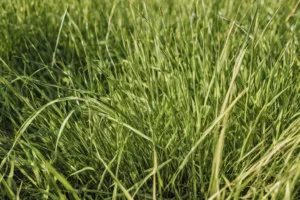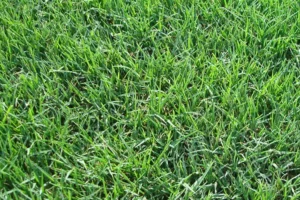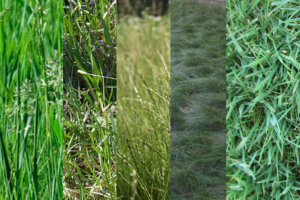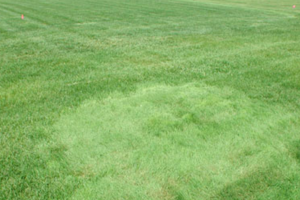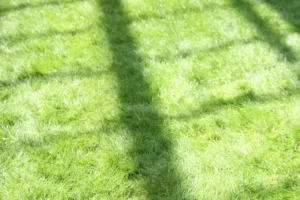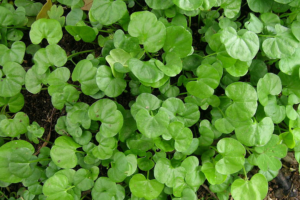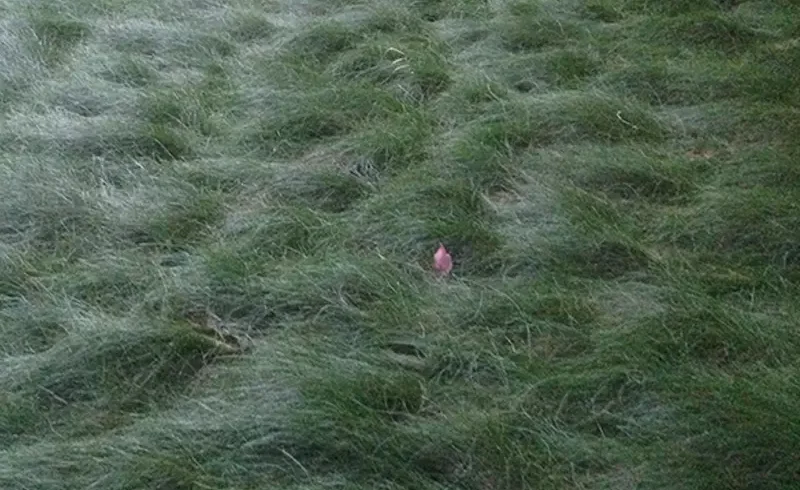
Introduction
Overview of Fine Fescue
Fine Fescue is a term that encompasses a group of cool-season grasses known for their fine blades and tolerance to shade. These grasses, which include creeping red fescue, hard fescue, chewings fescue, and sheep fescue, are often used in lawn and turf applications, particularly in cooler climates and shaded areas. Their ability to thrive in less-than-ideal conditions and low maintenance requirements make them a popular choice among homeowners and landscape professionals.
Fine Fescue grasses are not only appreciated for their aesthetic appeal but also their ecological benefits. Their deep root systems help prevent soil erosion, improve soil health, and contribute to carbon sequestration. Moreover, their ability to grow in low-fertility soils reduces the need for fertilizers, making them a more environmentally friendly choice for lawns and landscapes.
Importance and Uses of Fine Fescue
The importance of Fine Fescue extends beyond residential lawns. These grasses play a significant role in pasture and forage systems, providing a valuable food source for livestock worldwide. They are also used in soil conservation efforts, helping to stabilize soils and prevent erosion on slopes and embankments.
In addition to these practical uses, Fine Fescue grasses have aesthetic value. Their delicate texture and deep green color make them attractive for lawns, golf courses, and other landscaped areas. Whether you’re a homeowner seeking a low-maintenance lawn, a farmer looking for resilient forage grass, or a conservationist working on a soil stabilization project, Fine Fescue offers a range of benefits and uses that make it a versatile and valuable grass species.
Origin and Spread of Fine Fescue
Origin of Fine Fescue
Fine Fescue is believed to have originated in Europe and was later introduced to other parts of the world, including North America. These grasses are part of the more prominent Fescue family, which includes over 300 species distributed across the globe. The Fine Fescues are distinguished by their fine leaf texture and ability to thrive in more relaxed and shaded climates. Read more here
The different species of Fine Fescue, including creeping red fescue, hard fescue, chewings fescue, and sheep fescue, each have unique characteristics and adaptations. These species have evolved to adapt to various environmental conditions, contributing to their versatility and widespread use today. Read more here
Spread of Fine Fescue
The spread of Fine Fescue has been largely facilitated by human activity. These grasses were introduced to North America by European settlers and have since become established across the continent. They are commonly used in lawn and turf applications, particularly in cooler regions and areas with shaded conditions.
Fine Fescue has also spread to other parts of the world, including Australia and New Zealand, where it is used in pasture and forage systems. Despite its non-native status in these regions, Fine Fescue has generally been able to coexist with native plant species without becoming invasive. This ability to integrate into diverse ecosystems has contributed to the global spread and success of Fine Fescue. Read more here
Description and Physical Characteristics
Description of Fine Fescue
Fine Fescue is a group of cool-season grasses known for their fine leaf texture and tolerance to shade. This group includes several species, such as creeping red fescue, hard fescue, chewings fescue, and sheep fescue. Each species has unique characteristics, but they all share the common trait of having narrow, finely textured leaves.
The color of Fine Fescue grasses can vary from a deep green to a bluish-green, depending on the species and growing conditions. The grass blades are typically rolled in the bud, and the leaf sheaths are often compressed. The plants form a dense turf, with some species having a more upright growth habit and others being more prostrate.
Physical Characteristics of Fine Fescue
One of the defining physical characteristics of Fine Fescue is its fine leaf texture. The narrow, thin grass blades give the turf a delicate, soft appearance. This fine texture is one of the reasons why Fine Fescue is a popular choice for lawns and other landscaped areas.
In addition to their fine texture, Fine Fescue grasses also have a deep root system. This allows them to access water and nutrients from more profound into the soil, contributing to their drought tolerance. The root system also helps to stabilize the soil, making Fine Fescue effective for erosion control.
Fine Fescue grasses are also known for their bunching growth habit. Fine Fescues grow in clumps or tufts rather than spread through stolons or rhizomes like other grass species. This growth habit can contribute to a dense, uniform turf when the grasses are appropriately managed.
Soil Requirements
Soil Type and Texture
Fine Fescue grasses are adaptable to various soil types and textures. They can grow in sandy, loamy, or clayey soils, making them versatile for different landscapes. However, they generally prefer well-drained soils and may need help in areas with poor drainage or saturated conditions.
The texture of the soil can also influence the growth and health of Fine Fescue. Loamy soils, which balance sand, silt, and clay, are often ideal as they provide good drainage while retaining sufficient moisture and nutrients. To prevent drought stress, fine Fescue may require frequent watering in sandy soils, which drain quickly.
Soil pH and Fertility
Fine Fescue grasses can tolerate various soil pH levels but generally prefer slightly acidic to neutral conditions (pH 5.5 to 7.0). The grass may exhibit nutrient deficiencies or other growth problems in soils with a pH outside this range. Regular soil testing can help identify pH imbalances and guide the appropriate amendments.
When it comes to soil fertility, Fine Fescue has relatively low nutrient requirements compared to some other grass species. It can grow in low-fertility soils, reducing the need for frequent fertilization. However, a balanced fertilizer that provides necessary macronutrients (nitrogen, phosphorus, and potassium) and micronutrients may benefit optimal growth and color. As always, soil testing is recommended to determine the specific nutrient needs of the soil.
Ecological Benefits
Soil Conservation and Erosion Control
One of the critical ecological benefits of Fine Fescue is its role in soil conservation and erosion control. The deep root system of Fine Fescue helps to stabilize the soil, reducing erosion caused by wind and water. This makes Fine Fescue an effective tool for erosion control in areas prone to soil degradation, such as slopes and riverbanks.
In addition to preventing erosion, the roots of Fine Fescue also contribute to soil health. They create channels in the soil that enhance water infiltration and reduce runoff. They also help cycle nutrients in the soil, contributing to soil fertility. As such, Fine Fescue is often used in soil conservation projects and land reclamation efforts.
Carbon Sequestration
Fine Fescue, like other grass species, plays a significant role in carbon sequestration. The grass absorbs carbon dioxide from the atmosphere through photosynthesis and stores it in its biomass. This helps to mitigate climate change by reducing the amount of carbon dioxide, an essential greenhouse gas, in the atmosphere.
The ability of Fine Fescue to sequester carbon is enhanced by its deep root system. The roots store significant carbon in the soil, which can remain for many years. This underground carbon storage is a form of long-term carbon sequestration, which is particularly important in the fight against climate change. The role of Fine Fescue and other grasses in carbon sequestration is an active area of research, with potential implications for climate change mitigation strategies.
Common Diseases and Pests
Common Diseases
While Fine Fescue is generally a hardy and resilient grass, it can be susceptible to certain diseases, particularly under stress or unfavorable growing conditions. Some of the most common diseases that affect Fine Fescue include leaf spot, red thread, and dollar spot.
Leaf spot is a fungal disease that causes small, dark spots on the grass blades. If left untreated, it can lead to thinning of the turf and significant damage. The red thread is another fungal disease characterized by red or pink threads on the grass blades. Dollar spot, named for the silver dollar-sized patches it creates, is a common disease in lawns and can cause significant damage if not properly managed.
Proper lawn care practices, such as regular mowing, adequate watering, and balanced fertilization, can help prevent these diseases. Fungicides may also be used if necessary, but they should be used as a last resort and by label instructions.
Common Pests
Fine Fescue can also be affected by various pests. Common insect pests include billbugs, sod webworms, and chinch bugs. These insects can cause damage by feeding on the grass blades or roots, leading to brown patches or turf thinning.
In addition to insects, Fine Fescue can also be affected by nematodes, microscopic worms that feed on the roots of the grass. Nematode damage can result in yellowing or wilting of the grass and, in severe cases, death of the turf.
Pest control strategies for Fine Fescue include maintaining a healthy lawn through proper care practices, using pest-resistant varieties of Fine Fescue, and using pesticides if necessary. As with fungicides, pesticides should be used as a last resort and by label instructions.
Cultivation and Management of Fine Fescue – Planting and Seeding Techniques
Preparation and Seeding
Before planting Fine Fescue, it’s essential to prepare the soil properly. This includes removing existing vegetation, tilling the soil to improve its structure, and adding any necessary soil amendments based on a soil test. Once the soil is prepared, the area can be leveled and smoothed to prepare for seeding.
When it comes to seeding Fine Fescue, timing is essential. The best time to seed Fine Fescue is in the early fall when the soil temperatures are still warm but the air temperatures start to cool. This allows the seeds to germinate and establish before the winter. The seeds can be spread evenly over the area using a broadcast spreader and then lightly raked into the soil to ensure good seed-to-soil contact.
Watering and Germination
After seeding, the area should be watered lightly but frequently to keep the soil moist and encourage germination. It’s important not to overwater, as this can cause the seeds to wash away or lead to disease problems. Once the seeds have germinated and the grass starts to grow, the watering frequency can be reduced, but the amount of water per watering session should be increased to encourage profound root growth.
Germination time for Fine Fescue can vary depending on the specific species and the growing conditions, but generally, you can expect to see germination within 7-14 days. Once the grass has reached a height of about 3 inches, it can be mowed for the first time. It’s essential to continue to care for the new grass by watering, mowing, and fertilizing as needed to ensure a healthy, dense turf.
Mowing and Maintenance Tips
Mowing Guidelines
Mowing is an essential aspect of maintaining a Fine Fescue lawn. The recommended mowing height for Fine Fescue is typically between 2.5 and 3.5 inches. Mowing at this height will help to promote dense turf and discourage weed growth. A sharp mower blade is essential to ensure clean cuts and avoid tearing the grass blades, which can lead to disease.
When mowing Fine Fescue, it’s generally best to follow the “one-third rule,” which states that you should never remove more than one-third of the grass blade at a time. This helps to minimize stress on the grass and promotes healthy growth. Additionally, leaving the grass clippings on the lawn after mowing can help to return nutrients to the soil and reduce the need for fertilization.
Maintenance Tips
In addition to regular mowing, Fine Fescue lawns require some other basic maintenance practices. This includes watering, fertilizing, and aerating. Fine Fescue is relatively drought-tolerant but may require supplemental watering during dry periods. The lawn should be watered deeply and infrequently to encourage profound root growth.
Fertilization needs for Fine Fescue are generally low compared to other grass species. A soil test can help determine the specific nutrient needs of your lawn. Typically, a slow-release, balanced fertilizer applied in the fall will provide the necessary nutrients for the grass.
Aeration can also benefit Fine Fescue lawns, particularly in compacted soils. This process involves removing small plugs of soil from the lawn to improve air, water, and nutrient movement in the soil. Aeration is best done in the fall, before fertilization.
Uses of Fine Fescue
Use in Lawns and Sports Fields
Fine Fescue is famous for residential lawns, commercial landscapes, and public parks. Its fine texture and deep green color make it an attractive option for these settings. It’s particularly well-suited for cooler climates and shaded areas where other grass species may struggle. This adaptability makes it a versatile choice for various lawn and landscape applications.
In addition to its aesthetic appeal, Fine Fescue is also appreciated for its low maintenance requirements. It’s relatively drought-tolerant, has low fertility needs, and can tolerate some foot traffic. These characteristics make Fine Fescue a practical choice for homeowners and landscape professionals looking for low-maintenance, attractive lawn grass.
Use in Pasture and Forage
Fine Fescue is also used in pasture and forage systems, providing a valuable food source for livestock. Its ability to thrive in various soil conditions and its resistance to drought make it a reliable choice for pastures. The deep root system of Fine Fescue not only helps the grass survive in less-than-ideal conditions but it also contributes to soil health, making it beneficial for pasture systems in the long term.
In addition to providing forage, Fine Fescue also contributes to pasture systems’ overall health and productivity. Its deep roots help improve soil structure and fertility, promoting the growth of other plants and contributing to a diverse and healthy pasture ecosystem. This makes Fine Fescue a valuable addition to sustainable pasture management strategies.
Use in Erosion Control and Soil Conservation
Fine Fescue plays a significant role in erosion control and soil conservation. Its deep root system helps stabilize the soil, preventing erosion on slopes, embankments, and other areas prone to soil degradation. Fine Fescue is effective for soil conservation projects and land reclamation efforts.
In addition to preventing erosion, the roots of Fine Fescue also contribute to soil health. They create channels in the soil that enhance water infiltration and reduce runoff. They also help cycle nutrients in the soil, contributing to soil fertility. As such, Fine Fescue is often used in soil conservation projects and land reclamation efforts.
Environmental Uses
Beyond its practical applications, Fine Fescue also contributes to environmental health. It’s a valuable tool for carbon sequestration, helping to mitigate climate change by absorbing carbon dioxide from the atmosphere. This role in carbon sequestration is enhanced by its deep root system, which stores carbon in the soil where it can contribute to long-term carbon storage.
Furthermore, its ability to grow in low-fertility soils reduces the need for fertilizers, making it a more environmentally friendly choice for lawns and landscapes. This ability to thrive with less input reduces the environmental impact of maintaining a Fine Fescue lawn or landscape, contributing to its popularity and widespread use.
Case Studies
Case Study 1: Fine Fescue in Urban Landscaping
Fine Fescue has been successfully used in landscaping projects in many urban areas due to its low maintenance requirements and aesthetic appeal. For instance, Fine Fescue was chosen in a city park for its ability to thrive in shaded areas where other grass species struggled. The grass was able to establish quickly and required less watering and mowing than other species, reducing maintenance costs and environmental impact.
Case Study 2: Fine Fescue in Erosion Control
Fine Fescue has also been used in several erosion control projects. Fine Fescue was planted on a steep slope prone to soil erosion in one case. The grass’s deep root system helped stabilize the soil, preventing erosion and promoting soil health. This case study demonstrates the effectiveness of Fine Fescue in erosion control and its potential for use in similar projects.
Case Study 3: Fine Fescue in Pasture Systems
Fine Fescue’s role in pasture systems has also been studied. In one case, Fine Fescue was incorporated into a pasture system for sheep. The grass was found to be a valuable source of forage, and its deep roots contributed to soil health and fertility. This case study highlights the potential of Fine Fescue for use in sustainable pasture management.
The Future of Fine Fescue
Climate Change and Drought Tolerance
As the effects of climate change continue to unfold, the drought tolerance of Fine Fescue will likely become an increasingly valuable trait. With predictions of more frequent and severe droughts in many regions, grasses that can survive with less water will be in high demand. Fine Fescue’s ability to withstand dry conditions could make it a key player in future landscaping and agricultural practices aimed at conserving water.
In addition to its drought tolerance, Fine Fescue’s ability to grow in various soil conditions, including poor soils, may also be beneficial in a changing climate. As weather patterns shift and soil conditions change, the adaptability of Fine Fescue could allow it to thrive in areas where other grasses struggle.
Sustainable Landscaping and Agriculture
The future of Fine Fescue also looks bright in the realm of sustainable landscaping and agriculture. Its low maintenance requirements and ability to grow in low-fertility soils make it an environmentally friendly choice for lawns and landscapes. As more homeowners and landscape professionals seek sustainable options, Fine Fescue will likely become an increasingly popular choice.
Fine Fescue’s role in pasture systems and soil conservation efforts will likely continue and expand in agriculture. Its deep roots improve soil health and prevent erosion, making it a valuable tool for sustainable agriculture. As the agricultural industry continues seeking more sustainable and environmentally friendly practices, the use of Fine Fescue and other similar species will likely grow.
Conclusion
Fine Fescue is a versatile grass species with a wide range of applications. From its use in lawns and sports fields to its role in pasture systems and erosion control, Fine Fescue is a valuable asset in landscaping and environmental conservation efforts. Its ability to thrive in various conditions, including shaded areas and low-fertility soils, makes it a practical choice for many environments.
Looking ahead, the future of Fine Fescue appears promising. As the impacts of climate change continue to unfold, the drought tolerance and adaptability of Fine Fescue will likely become increasingly important. Furthermore, as more individuals and industries seek out sustainable and environmentally friendly practices, the low maintenance requirements and ecological benefits of Fine Fescue position it as a critical player in the future of landscaping and agriculture.
Fine Fescue offers many benefits whether you’re a homeowner looking for a low-maintenance lawn option, a farmer seeking sustainable pasture grass, or a conservationist working on soil erosion control.

Bob Green, a passionate lawn care enthusiast with over two decades of landscaping experience, is this website’s proud owner. His vast knowledge of horticulture and dedication to helping homeowners maintain beautiful lawns are reflected in the valuable content he shares on his platform. John has always been interested in Agrostology.









